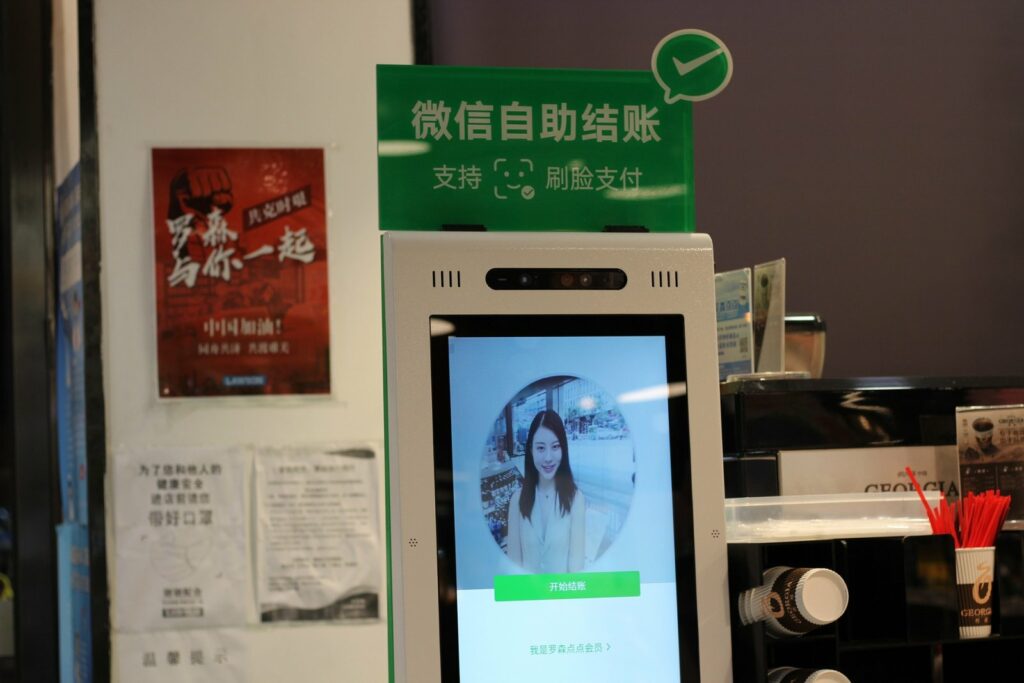Examples of customer centricity include the ability of people in an organization to understand customers’ situations, perceptions, and expectations. Customer centricity demands that the customer is the focal point of all decisions related to delivering products, services, and experiences to create customer satisfaction, loyalty, and advocacy.
Customer centricity is a mindset that focuses on creating positive experiences for the customer through the full set of products and services that the enterprise offers. To understand the foundations and strategic value of this approach, read more about why customer centricity is important. Customer-centric organizations deliver whole-product solutions designed with a deep understanding of customer needs.
Examples of customer centricity are especially pronounced in the B2B world, where the concept is integral to successful businesses of all kinds. To run a customer-centric business, you should put customer needs and preferences first in every aspect of your company’s operations.
A survey of 250 individuals at 180 B2B companies by California Management Review found that businesses reporting a “very mature” level of customer centricity experienced 2.5x revenue growth compared with those reporting their company was “very immature.” These findings are clear examples of customer centricity driving business success.
Chinese retail places significant emphasis on customer centricity, seeing it as crucial for success in a highly competitive market. Leading companies like Alibaba and JD use big data and AI to offer personalized experiences, contributing to Alibaba’s $109.5 billion in revenue for 2023.
The “New Retail” concept merges online and offline channels, with over 200 Hema stores offering seamless integration. Innovative technologies such as AR and AI-powered bots enhance customer engagement, and JD’s extensive logistics network ensures same-day delivery for 90% of orders.
Continuous feedback mechanisms enable companies to adapt quickly, maintaining high customer satisfaction and loyalty. These practices are prominent examples of customer centricity within the retail industry.
Importance of Learning from Customer-Centricity Examples
Customer centricity is a business strategy that prioritizes the customer in all decision-making to create positive experiences and build long-term loyalty. Examples of customer centricity include efforts to drive satisfaction, retention, and profitability.
- In 2024, Forrester reports that customer experience is a high priority for about 75% of global business and technology professionals and their organizations.
- Examples of customer centricity in China are demonstrated by the emphasis on personalized customer experiences across both online and offline channels.
- Chinese businesses prioritize understanding consumer preferences and behaviors to deliver tailored products and services, fostering strong customer relationships and loyalty.
This approach highlights China’s commitment to enhancing satisfaction and retention through proactive customer engagement strategies.

Examples of Customer Centricity: Sustainability
Sustainability enhances customer satisfaction by aligning business practices with environmental and social values, fostering trust and loyalty among eco-conscious consumers. Examples of customer centricity in sustainability include integrating eco-friendly practices that resonate with customer values.
- A brand needs to implement sustainability as part of its identity to better connect with this new age of consumers.
- Gen Z and Millennial customers are 27% more likely to purchase from a company than older generations if they believe that the brand cares about its impact on people and the planet.
- These generational preferences are clear examples of customer centricity driving purchasing decisions.
- Moreover, if the company’s product or solution is of higher quality due to sustainable practices, it can exceed customer expectations, further illustrating examples of customer centricity.
Patagonia exemplifies sustainability for customer satisfaction by using 87% recycled materials in their products, offering a Worn Wear program that has repaired over 100,000 items since 2013, and ensuring fair labor practices through the Fair Trade Certified™ program, which has resulted in $15 million paid to workers in additional wages.
These initiatives are prime examples of customer centricity, as Patagonia’s commitment to sustainability resonates with eco-conscious consumers. This dedication contributes to Patagonia’s annual revenue of approximately $1 billion and fosters strong brand loyalty, showcasing how sustainability and customer centricity can drive business success.
Examples of Customer Centricity: Omnichannel CX
Implementing an omnichannel CX strategy allows companies to engage with customers across various touchpoints—like social media, streaming platforms, and e-commerce sites—expediting interactions and enhancing customer engagement. This approach ensures customers receive a seamless and consistent experience, regardless of the platform they use.
Suning, a leading electronics retailer in China, exemplifies this through its integrated online and offline strategies. With over 1,600 physical stores nationwide, Suning allows customers to transition effortlessly between digital and physical channels. Online, customers can explore a wide range of products with features like personalized recommendations and online customer service. They can choose convenient home delivery options or pick up products from nearby stores. In-store, Suning enhances the experience with interactive displays, product demonstrations, and knowledgeable staff. This omnichannel approach not only boosts customer satisfaction by providing flexibility and convenience but also strengthens Suning’s market presence through cohesive online-to-offline integration.
Suning’s customer-centric approach prioritizes convenience and adaptability, reflecting a deep understanding of customer needs. By offering personalized experiences and multiple fulfillment options, Suning meets customers where they are, enhancing loyalty and engagement. This strategy not only improves customer satisfaction but also sets a benchmark for other retailers aiming to integrate digital and physical experiences seamlessly.
Examples of Customer Centricity: Data and Generative AI
Emotional connection with customers is crucial in CX. Companies use CRM data for hyper-personalization, offering features like product recommendations, virtual cart reminders, SMS alerts, and personalized online greetings. These efforts are clear examples of customer centricity, as they focus on creating tailored experiences that resonate with individual customers.
How can businesses differentiate their personalization efforts to better connect with their customers?
- Improving the hyper-personalization of customer experience was identified as a top use case by 42% of AI decision-makers.
- Through technology like generative AI, companies can better identify trends in individuals’ behavior and create personalized experiences.
- These technological advancements provide further examples of customer centricity by leveraging data to meet unique customer needs.
Tencent, a leading Chinese technology conglomerate, exemplifies customer centricity through personalized experiences using data and generative AI. Through its ubiquitous messaging app WeChat, Tencent integrates AI algorithms to deliver highly personalized content and services.
WeChat’s “Moments” feature uses data analytics to curate personalized news feeds based on user interests and interactions. Additionally, Tencent employs AI-driven chatbots within WeChat to provide instant and tailored customer support, addressing inquiries and resolving issues efficiently.
These personalized approaches not only enhance user satisfaction but also showcase Tencent’s commitment to leveraging advanced technologies for superior customer engagement. These initiatives are prime examples of customer centricity in action.

Examples of Customer Centricity: Loyalty Program
Loyalty programs reward customers for their continued business, but they are also shown to increase customer retention. Examples of customer centricity in loyalty programs include creating systems that not only reward repeat purchases but also enhance the overall customer experience.
- 79% of customers are more likely to do business with a company because of their loyalty program.
- Many businesses are even personalizing their programs, adding a hierarchy of loyalty status to highlight their most loyal customers.
- These personalized loyalty programs are clear examples of customer centricity, as they tailor rewards to the engagement level of each customer.
- Given the correlation between customer retention and customer loyalty, it is important that companies have a proactive approach to improving their loyalty program benefits.
Beauty retail giant Sephora is known for its Beauty Insider Program, which exemplifies customer centricity. Free to join, the program categorizes shoppers into tiers—Insiders, VIB, and Rouge—based on their annual store spending. Each tier rewards shoppers with points equivalent to a dollar spent; for example, Insiders earn one point per dollar.
In addition to a free birthday gift, all members gain access to trial-sized products. Moving up the tiers unlocks more rewards, including early access to new launches, increased discounts, additional birthday perks, makeup training classes, and even complimentary full-sized products.
These tiered rewards systems are prime examples of customer centricity, as they provide tailored incentives that enhance the shopping experience and foster long-term loyalty.

Why is it Important to Talk About Customer Centricity Examples
If you’re looking for a comprehensive breakdown of the advantages this strategy brings, explore the key benefits of customer centricity.
Customer Centricity Examples #1: Enhanced Customer Satisfaction
Customer centricity focuses on understanding and meeting customer needs effectively. By prioritizing customer satisfaction, businesses can build loyalty and advocacy, leading to repeat business and positive word-of-mouth recommendations. Examples of customer centricity include strategies that help in creating long-term relationships with customers, which is crucial for sustained business success.
An example of a Chinese company demonstrating customer centricity with enhanced customer satisfaction is Xiaomi. Xiaomi prioritizes customer feedback and innovation to tailor its products and services to meet consumer needs effectively. They engage directly with customers through online forums and social media platforms, gathering insights and addressing concerns promptly.
These practices are clear examples of customer centricity, as they focus on understanding and addressing customer needs. Xiaomi’s approach to providing high-quality, affordable technology products, coupled with responsive customer support, has garnered a strong and loyal customer base both in China and globally.
This commitment to understanding and meeting customer expectations contributes to enhanced satisfaction and loyalty among Xiaomi customers, showcasing prime examples of customer centricity in action.

Customer Centricity Examples #2: Competitive Advantage
In today’s competitive market, where products and services can often be similar, customer centricity sets businesses apart. Examples of customer centricity include companies prioritizing the understanding of their customers’ preferences, pain points, and behaviors, allowing them to tailor their offerings more precisely. This customization not only attracts more customers but also helps in retaining them against competitors who may not offer the same level of personalized service.
Huawei exemplifies gaining a competitive advantage through customer centricity by investing heavily in R&D to innovate products tailored to customer needs. They prioritize personalized customer support and solutions, which are clear examples of customer centricity in action. This approach has helped build a strong global presence for Huawei. Their consumer business reported over $74 billion in revenue for 2023, underscoring their success in the competitive tech industry through customer-focused strategies.

Customer Centricity Examples #3: Business Growth and Profitability
Research consistently shows that customer-centric companies tend to be more profitable. By focusing resources on delivering exceptional customer experiences, businesses can increase customer lifetime value, reduce churn rates, and optimize their marketing efforts. This results in improved revenue streams and sustainable growth over time.
In 2023, Forbes stated that customer-centric companies not only achieve revenue growth 4% to 8% faster than their competitors but also enjoy higher profits compared to product-centric counterparts. A study across 80 countries involving over 1,300 organizations found that 84% of companies prioritizing customer experience saw increased revenue, with 79% reporting significant cost savings. Retaining repeat customers is more cost-effective than acquiring new ones—customer acquisition costs are up to five times higher. A mere 2% improvement in customer retention equals the profit of a 10% cost reduction, emphasizing the financial benefits and potential for sustainable growth through customer-centric strategies.
Starbucks’ consumer-centric strategies have significantly contributed to its growth and profitability. The Starbucks Rewards program, with over 24 million active members in the U.S. alone, drives approximately 40% of transactions. This loyalty program increases customer frequency and spending, boosting overall sales. The company’s global store count has grown to over 33,000 locations, reflecting its expansion and customer demand. Moreover, Starbucks’ commitment to ethical sourcing and community engagement resonates with consumers, enhancing brand loyalty and market share. These efforts have propelled Starbucks to consistent revenue growth, with fiscal year 2023 reporting revenues of $31.6 billion, highlighting the effectiveness of consumer-centric initiatives in driving business success.
Customer Centricity Examples #4: Innovation and Adaptability
Customer centricity encourages businesses to stay agile and responsive to changing market dynamics. By continuously gathering and analyzing customer feedback, companies can identify emerging trends, anticipate shifts in consumer behavior, and innovate products or services accordingly. Examples of customer centricity include these proactive approaches, which ensure that businesses remain relevant and resilient in evolving market conditions.
Amazon demonstrates consumer-centricity through advanced technology and customer-focused strategies, driving significant business growth and profitability. Personalized recommendations, which are clear examples of customer centricity, increase sales, with cross-selling and upselling contributing 35% to revenue.
Amazon Prime, with over 200 million subscribers globally, encourages repeat purchases and higher spending. Customer reviews influence purchases, with highly rated products seeing 32% more sales. Efficient logistics ensure fast delivery, enhancing customer satisfaction. Continuous innovation, like voice shopping with Alexa, expands market reach, solidifying Amazon’s leadership in e-commerce and beyond. These initiatives are prime examples of customer centricity in action.

Why Get Inspired by Customer Centricity Examples from China?
Customer centricity in China is becoming increasingly pivotal across industries, emphasizing personalized experiences and responsive service. Examples of customer centricity include companies leveraging advanced technology to understand and fulfill customer preferences effectively, driving satisfaction and loyalty.
From retail to technology, businesses prioritize customer engagement through tailored solutions and proactive support, aiming to enhance competitiveness and sustain growth in a dynamic market environment.
Get Inspired by Customer Centricity Examples from China #1: Innovative Strategies
Chinese businesses employ innovative approaches to prioritize customer satisfaction and loyalty, often leveraging advanced technologies and data analytics to personalize customer experiences.
For example, Pinduoduo, the parent company of Temu, is a Chinese e-commerce platform renowned for its innovative use of data to elevate customer satisfaction. By analyzing user behavior and purchase patterns, Pinduoduo tailors personalized recommendations and discounts through its social-driven shopping model.
This approach harnesses data from social interactions and group buying dynamics to craft engaging shopping experiences that resonate with its diverse user base. Ultimately, this data-driven strategy enhances customer engagement and boosts conversion rates by presenting products and promotions that align with individual preferences and collective purchasing trends.
Get Inspired by Customer Centricity Examples from China #2: Agile Adaptation to Trends
Chinese retail businesses demonstrate agility in adopting and integrating emerging trends like livestream shopping and mobile payment technologies. Examples of customer centricity include how these companies leverage innovations to enhance customer engagement and streamline purchasing processes, setting benchmarks for global retail practices.
Xiaohongshu (RED) is a popular Chinese social commerce platform that seamlessly integrates influencer-driven livestream shopping with user-generated content. By allowing influencers to showcase products in real-time while engaging directly with viewers through comments and questions, Xiaohongshu provides clear examples of customer centricity.
This approach enhances customer interaction and trust, resulting in higher conversion rates and customer satisfaction. This agile adaptation not only boosts sales but also sets a precedent for how social commerce can drive consumer behavior in the digital age.
Get Inspired by Customer Centricity Examples from China #3: Market Leadership
China’s emphasis on customer satisfaction has led to leadership in competitive markets, demonstrating effective customer relationship management through tailored services and proactive engagement strategies. Examples of customer centricity in this context highlight how businesses prioritize customer needs to achieve market success.
Xiaomi, a prominent Chinese electronics company, maintains market leadership by continuously engaging with customers through innovative product launches and responsive customer service. Examples of customer centricity at Xiaomi include collecting extensive feedback from users to refine product features and designs, ensuring each new release meets customer expectations.
This customer-focused approach not only drives sales but also cultivates brand loyalty, reinforcing Xiaomi’s reputation for delivering products that resonate with consumer needs and preferences.
What Are the Best Customer Centricity Examples in China?
“Customer” refers to individuals who purchase goods or services from a business. Building strong customer relationships is vital for business success, and providing excellent customer service ensures satisfaction and loyalty. In China, customer service is influenced by cultural and societal factors, emphasizing long-term relationships and personal connections. The concept of “guānxì” (关系), meaning a network of relationships and connections, is crucial in Chinese business. Building and maintaining strong “guānxì” is key to success and helps businesses offer better service and stronger relationships. Here are some of the best examples of customer centricity in China:
Alibaba (阿里巴巴)
Alibaba is a global leader in e-commerce, cloud computing, and digital media. It operates platforms such as Taobao and Tmall, which are central to China’s online shopping ecosystem. Alibaba’s success in customer centricity is largely attributed to its advanced recommendation algorithms and robust customer service infrastructure. For example, Taobao’s personalized shopping experience uses data analytics to recommend products tailored to each user’s preferences. Additionally, Alibaba’s Cainiao logistics network ensures quick and efficient delivery, enhancing customer satisfaction.
JD.com (京东)
JD.com is one of China’s largest e-commerce companies, specializing in direct sales and third-party online marketplaces. Renowned for its focus on quality and authenticity, JD.com’s standout feature is its technology-driven logistics system. The company guarantees fast delivery with services like same-day or next-day delivery in major cities. JD.com also offers a superior customer service experience through its rigorous product quality checks and dedicated support teams, ensuring customer trust and satisfaction.
CTrip (携程)
Ctrip (now known as Trip.com Group) is one of China’s leading online travel agencies, known for its customer-centric approach. They offer comprehensive travel services, including flight bookings, hotel reservations, and tour packages. Ctrip’s success is largely attributed to its innovative use of technology to enhance customer experience, such as providing personalized recommendations and seamless booking processes. Their 24/7 customer service hotline, which offers support in multiple languages, demonstrates their commitment to customer satisfaction. By prioritizing convenience and customer care, Ctrip has built a loyal customer base and established itself as a leader in the travel industry.
Haidilao (海底捞)
Haidilao (海底捞) is a leading hotpot restaurant chain in China, renowned for its exceptional customer service and unique dining experience. The company sets a high standard for customer centricity by offering personalized services, such as free manicures, snacks, and even board games while customers wait for a table. Haidilao’s staff are trained to provide attentive and friendly service, creating a welcoming and enjoyable atmosphere. In addition to these services, Haidilao incorporates advanced technology and robotics in its operations. Robots are used to deliver food to tables, and the company utilizes smart kitchens to ensure efficiency and consistency in meal preparation. This blend of personalized service and technological innovation has earned Haidilao a loyal customer base and a reputation as one of the best examples of customer-centric businesses in China.
Tencent (腾讯)
Tencent is a major player in social media, gaming, and fintech, with its WeChat app being a cornerstone of its customer-centric approach. WeChat integrates social networking, messaging, payments, and other services into one platform, providing a seamless user experience. Tencent uses big data and AI to personalize content and services, ensuring that users receive relevant and timely information. The platform’s Mini Programs allow businesses to create lightweight apps within WeChat, enhancing customer engagement and convenience. Tencent’s commitment to understanding and anticipating user needs makes it a prime example of customer centricity in China.
Hema (盒马鲜生)
Hema, also known as Freshippo, is Alibaba’s innovative supermarket chain that seamlessly integrates online and offline shopping experiences. Hema provides a highly personalized shopping experience by allowing customers to use the Hema app to scan product barcodes for detailed information, recipes, and reviews. The store offers 30-minute delivery within a 3-kilometer radius, leveraging Alibaba’s advanced logistics network. Hema’s use of technology, such as AI and big data, ensures inventory is optimized and customer preferences are met, making it a standout example of customer-centric retail in China.
Ashley Dudarenok: Customer Centricity Examples Keynote Speaker
Ashley Dudarenok is a renowned thought leader in Digital China, New Retail, and tech ecosystems, having authored 11 best-selling books on these topics. As a professional speaker, she specializes in the future of retail, examples of customer centricity, China’s tech ecosystems, and evolving business models.
Ashley advises top management and boards of multinational companies on customer-centric strategies and digital transformation in the competitive Chinese market. Recognized as one of the World’s Top 100 Retail Influencers by ReTHINK Retail, Ashley collaborates with global giants like Coca-Cola, Johnson & Johnson, Shiseido, BMW, and Disney to develop cutting-edge retail strategies.
Forbes acknowledges her as a leading authority on Chinese customer centricity, the future of retail, and China’s leadership models. Ashley provides up-to-date insights and actionable strategies on New Retail, Digital China, and tech ecosystems to drive future retail trends and implementation strategies in businesses worldwide. Examples of customer centricity in her work include personalized customer engagement and innovative digital solutions that enhance customer experiences.

Ashley Dudarenok as a Customer Centricity Examples Keynote Speaker
In today’s business landscape, where customer centricity has become a key driver of success, organizations are seeking expert guidance to navigate this transformative journey. Ashley Dudarenok, a renowned keynote speaker, offers invaluable insights and strategies to help businesses embrace customer centricity and excel in delivering exceptional customer experiences. Examples of customer centricity in her work include personalized strategies that significantly enhance customer loyalty and satisfaction.
As a keynote speaker specializing in customer centricity, Ashley Dudarenok integrates technology, consumer behavior, and business strategy, stressing the pivotal role of prioritizing customers across all organizational touchpoints.
With a focus on driving business growth and profitability, Ashley draws on her extensive industry experience to offer practical frameworks and compelling examples of customer centricity, urging organizations to adopt a customer-first mindset.
By inviting Ashley Dudarenok, organizations gain insights into cultivating exceptional customer experiences and fostering long-term loyalty through innovative retail technology and customer-centric strategies.
Her presentations challenge conventional methods and equip businesses with actionable steps to leverage technology for personalized interactions and sustainable success in today’s competitive landscape. Examples of customer centricity shared in her talks provide clear pathways for businesses to follow in creating meaningful and profitable customer relationships.

Customer Centricity Examples – Frequently Asked Questions (FAQs)
-
What are the top examples of customer centricity, both in China and globally?
The top examples of customer centricity globally include Apple’s focus on delivering exceptional user experiences, Ritz-Carlton’s commitment to anticipating and exceeding customer needs, and Zappos’ emphasis on providing outstanding customer service. In China, examples of customer centricity can be seen in Alibaba’s data-driven approach to understanding and meeting customer preferences, Tencent’s personalized services tailored to user needs, and Xiaomi’s strong focus on customer feedback and product improvements.
-
Why look at China for customer centricity examples?
The Chinese market’s rapid digitalization, competitive dynamics, unique consumer behaviors, and scale have driven Chinese companies to be at the forefront of customer-centric strategies, making them valuable examples of innovative approaches to understanding and serving customers that can provide lessons for businesses globally.
-
Why are customer centricity examples important in business?
Customer centricity examples are important in business because they illustrate how focusing on the customer can drive success. They provide tangible evidence of strategies and practices that effectively meet customer needs, leading to increased satisfaction, loyalty, and profitability. These examples can inspire and guide other businesses in implementing customer-centric approaches.
-
What can foreign brands and companies learn from Chinese customer centricity examples?
Foreign brands and companies can learn to leverage personalization and customization, seamlessly integrate online and offline channels, and harness the power of social commerce from Chinese customer centricity examples. These strategies can enhance customer satisfaction, loyalty, and overall business success.
-
What are examples of customer-centricity initiatives in Chinese e-commerce companies?
Chinese e-commerce companies, such as Alibaba and JD.com, excel in customer-centricity by offering personalized shopping experiences through AI-driven recommendations and ensuring fast delivery with efficient logistics networks. They also integrate social media and e-commerce to create seamless, engaging customer interactions.
-
What are examples of customer-centricity initiatives in Chinese fintech companies?
Companies like Ant Group offer personalized financial services based on user data, enhancing convenience and trust among customers.
-
What are some innovative examples of customer centricity in Chinese technology firms?
Tech companies like Tencent use customer data to personalize gaming experiences and social media interactions, fostering user engagement.
-
What are examples of customer centricity healthcare solutions developed by Chinese companies?
Companies like Ping An Good Doctor provide virtual healthcare consultations and personalized health management based on user health data.
-
What are examples of customer centricity loyalty programs implemented by Chinese airlines and travel services?
Airlines like China Southern Airlines offer personalized travel perks and rewards, while Ctrip provides customized travel recommendations and discounts.
-
How can Chinese companies from traditionally less customer-focused industries adopt and benefit from customer-centric practices?
By integrating customer feedback loops, training staff in customer service excellence, and leveraging technology to enhance personalized customer interactions.

